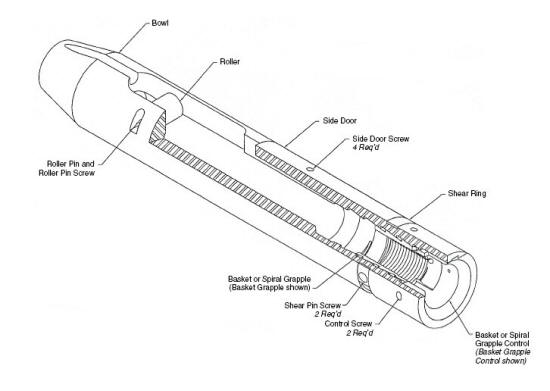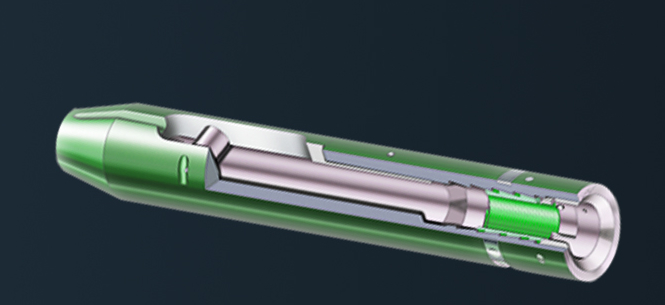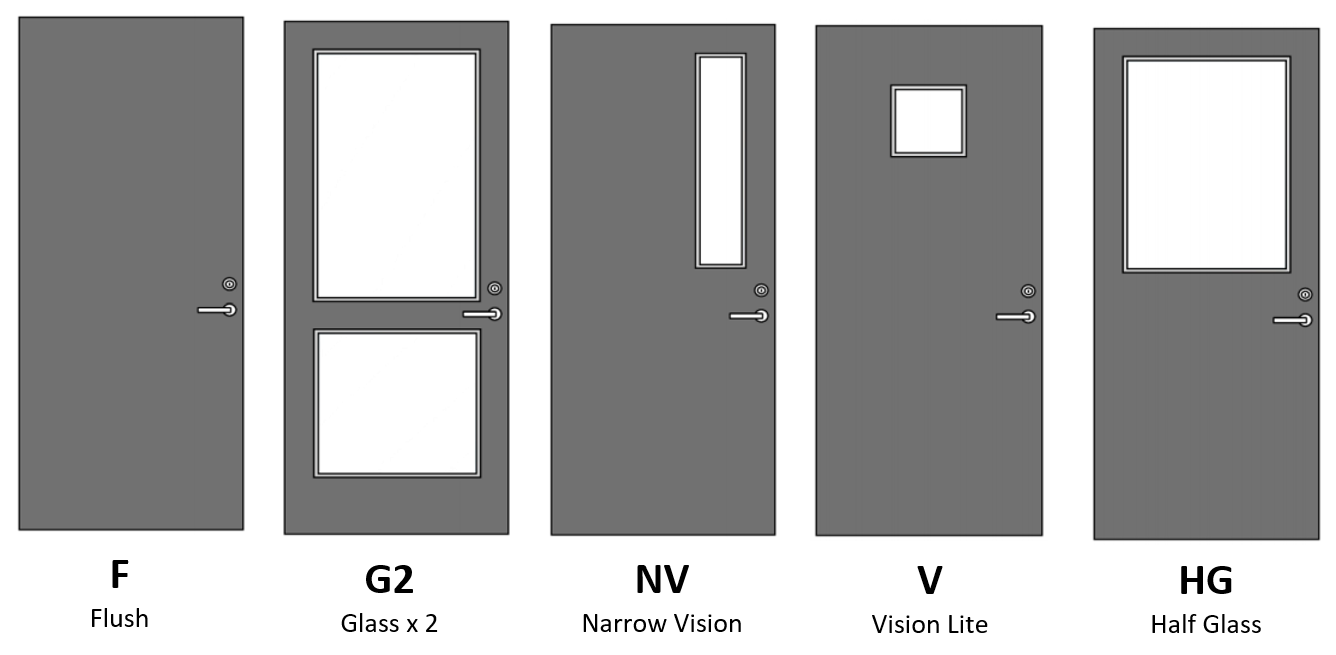side door overshot factory

The Series 10 Sucker Rod Overshot is a small, rugged tool designed for engaging and retrieving sucker rods, couplings, and other items from inside tubing strings.
Series 20 Short Catch Sucker Rod Overshots are designed for conditions when sucker rods, couplings, and other portions of a fish are too short for retrieval with a standard overshot.
The Hydraulic Release Overshot was designed to aid in the recovery of a stuck fish in a horizontal drilling application where normal rotation for release is not obtainable.
The Series 150 Releasing and Circulating Overshot consists of three main external parts: a Top Sub, a Bowl, and a Guide. Internal catch and pack-off parts are determined by the diameter of the fish. Each assembly is designed for a maximum catch diameter.
A Series 160 Side Door Overshot is recommended when fishing for cable tools or conductor lines in cased holes. The side door overshot is run in on tubing or drill pipe.
The Superior Hydraulic Jar is a straight pull, up only, jarring tool that utilizes a special valve section to meter oil from one side of the piston to the other side. This allows for controlled jarring action during stuck fish recovery.
The Z Type Hydraulic Jar is used for light drilling, fishing, coring, reaming, testing, side tracking, and washover operations. This straight-pull jar combines the principles of mechanics and hydraulics in a simple to assemble, easy to operate design.
The Bi-Directional Coiled Tubing Jar is designed to hit upward and downward blows. It can be dressed to only hit up or down. These tools’ small outside diameters and shorter lengths make them ideal for milling, drilling, workover, remedial, or completion operations, especially in vertical, deviated, and ultradeep wellbores.
The Casing Roller repairs and restores dented, collapsed, or buckled tubing or casing of any size and weight to its original inside diameter and roundness.
Arctic Weather 85-Ton and 120-Ton Power Swivels are enclosed in insulated, 20-foot metal containers. The containers have adjustable louvers to allow operation in warmer temperatures. Two bi-fold doors on one side and double doors at the back permit complete access.
The arctic weather package also features deicer injector to prevent them from icing. Fuel and hydraulic tank heaters, and a hydraulic powered hose reel. One of the back doors features a hose window for routing hoses out of the container. To retain heat, the hose window is fitted with rubber flaps and a metal door on separate skid that is pulled in and out of the container by a dual drum hydraulic winch.

Selecting the proper door construction ensures that the opening will achieve to the owner’s performance and cost expectations. At Syntégra, our goal is to manufacture and equip the door with the features and options to meet or exceed these expectations without overshooting or undershooting the target.
Syntégra doors can be constructed of 18ga. or /16ga. skins with a variety of cores. Our standard material is leveled A40 Galvanneal Steel. Beyond exceptional corrosion resistance, this material provides additional strength, scratch resistance, and improved coating adhesion. As an option for corrosive environments or aesthetic preference, Syntégra can also fabricate doors using Stainless Steel (304 or 316).

Around 1850, while running the Hanover factory, Samuel Fitz took over the Tuscarora Iron Works from Daniel Kennedy who had died at a young age. By this time wooden waterwheels were being made with metal hubs and axles. Some all metal waterwheels were also being made in England and finding their way to the United States. The advantage of having an "All Metal Waterwheel" was better machinery efficiency performance and simpler maintenance. Metal waterwheels also allowed the milling of products longer into the winter because the wheels would not freeze up. The performance increase was due to a curvilinear bucket (rounded shape). This type bucket reduced the turbulence of the water entering the bucket cavity, it also held the water longer in the buckets increasing the time duration of wheel cycle and had less water spillage. John Fitz (the son of Samuel) made his mark by being able to set up his machine shop to fabricate these metal water wheels using mass production processes. He had developed a standard metal bucket for a full range of wheel sizes, defined side panels to fixed sizes and an onsite assembly procedure that allowed most owners to assemble their new wheels with little assistance from a technician traveling in for site assembly. In looking at his machine shop work orders, even the total count and sizes of the rivets needed were detailed for each waterwheel order.
The Hanover factory and the Tuscarora Iron Works merged to form the I-X-L Water Wheel Company. Fitz had bought the name IXL from a turbine company he acquired around 1870 - 1880. If you look at it you see the phrase "I excel". By the late 1800"s the company was in full production of a full line of sizes of the world famous I-X-L Steel Overshot Water Wheel. In addition, the company continued to manufacture and restore all types of waterwheels. Fitz even manufactured wooden wheels for those clients who were committed to this type of wheel. The company continued to grow and on July 15, 1902 the company changed its name to the Fitz Water Wheel Company of Hanover, PA.
One of the main reasons for the success of the Fitz Water Wheel Company was not in its advertising but in the product itself. The first Fitz wooden wheels had a power efficiency of around 70%. Not bad for the time. With the introduction of the I-X-L Overshot Waterwheel, Fitz claimed over 90% efficiency. Fitz made sure he told the world about his great efficiency rating after a 136 page report was conducted in 1898 by the University of Wisconsin, Engineering School, and was posted to the public in 1913. By the late 1920"s the Fitz Water Wheel Company was the largest vertical waterwheel manufacturer in the world. Unlike turbines that lost their effectiveness with a small shift of water pressure, vertical waterwheels would continue to run in a low water volume situation. This made them ideal for factories and farms where water tables would vary widely during the year and product production was needed all year.

Note: *Cased Hole Only. The Chart above is a guide-line only and should be used as a rule of thumb; the final decision is that of the Customer; 4” Pin-up drill pipe is an option inside 7” casing, discuss
with Fishing Tool Manager for guidance. Consult with a EOFR Fishing Manager when requirements do not fall within the guide line shown; Bottom Hole Assemblies (BHA) also should be considered
* All pull loads listed are based on a magnet engaging a flat surface covering the entire face of the magnet. “Pick up” capability will be reduced considerably




 8613371530291
8613371530291